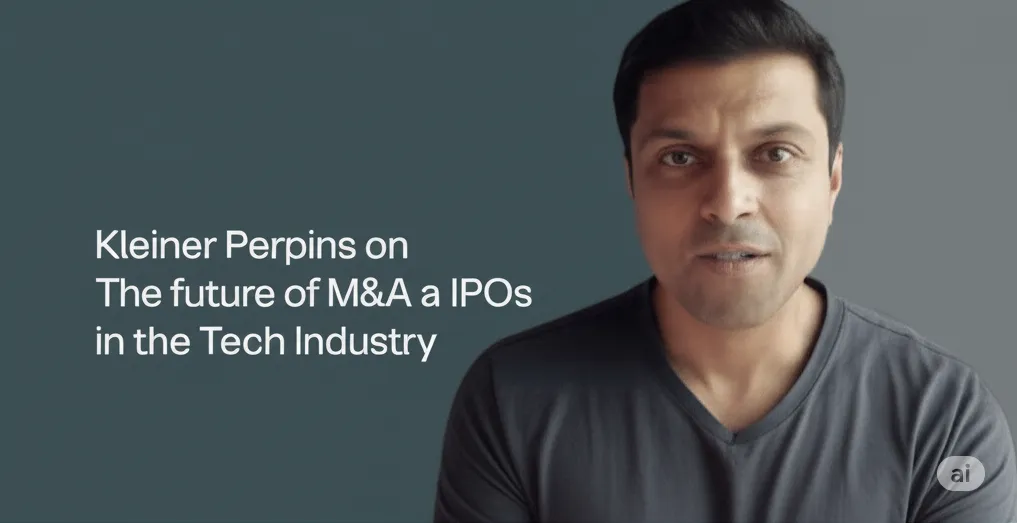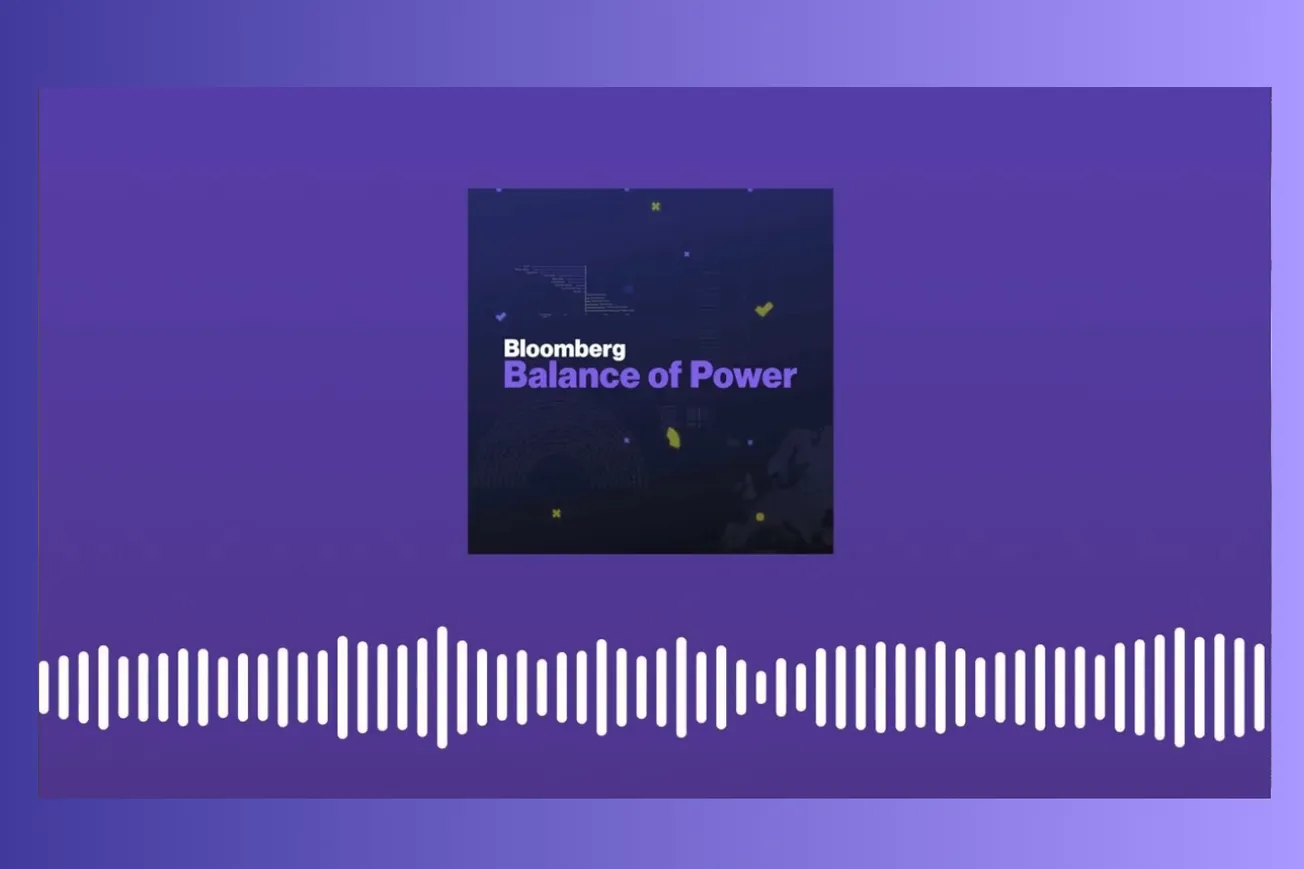Table of Contents
Venture capital veterans reveal how regulatory roadblocks and market dynamics are fundamentally reshaping startup exit strategies and capital allocation.
Key Takeaways
- IPO timelines have stretched from 4 years to 12 years, with revenue requirements jumping from $100M to over $500M annually
- Regulatory overreach from FTC, DOJ, and international bodies has virtually eliminated M&A exits for venture-backed companies
- India represents the next major investment frontier with 1.4 billion people, burgeoning middle class, and improved infrastructure
- Secondaries market has surged 65% year-over-year as alternative liquidity source, but may create perverse incentives for early exits
- AI investment thesis focuses on making scarce, high-skilled workforces more productive: doctors, lawyers, and engineers
- First-time VC fund managers face 87% failure rate reaching second fund, indicating massive washout of venture tourists
- Sovereign wealth funds and family offices are increasingly backing emerging managers while established firms maintain LP loyalty
- Portfolio concentration strategy beats diversification: top 2-3 investments drive entire fund returns in venture capital
Timeline Overview
- 00:00–15:25 — India Investment Opportunity: Discussion of India's 1.4B population, infrastructure improvements, Android phone penetration, and sovereign wealth fund interest in Indian startups
- 15:25–25:40 — Indian Ecosystem Analysis: Local vs global market focus, successful companies like Flipkart, entrepreneurial culture challenges, and brain drain to US markets
- 25:40–35:15 — Sovereign Wealth Fund Competition: How massive sovereign capital competes with endowments, value-add differentiation strategies, and emerging manager opportunities in Middle East
- 35:15–45:30 — Startup Mortality Data: Carta's 2018 cohort analysis showing 49% failure rate, meaningful vs window-dressing M&A, and portfolio strategy implications
- 45:30–55:45 — Portfolio Management Philosophy: Loss ratio importance, follow-on strategies, concentration vs diversification, and maximum ownership thresholds discussion
- 55:45–70:20 — M&A and IPO Market Challenges: Regulatory roadblocks from Lena Khan era, IPO timeline extension, revenue requirement inflation, and liquidity crisis analysis
- 70:20–80:35 — Secondaries Market Surge: 65% growth in secondary funds, continuation vehicles, employee equity sales, and debate over early exit incentives
- 80:35–90:50 — Venture Tourism Washout: 87% first-time manager failure rate, fund raising difficulty evolution, and institutional building requirements
- 90:50–END — Recent Investment Highlights: Kleiner's AI-focused bets on Glean, Ambience Healthcare, Harvey legal AI, and emerging manager strategies
India's Moment: The Next Trillion-Dollar Opportunity
The venture capital community increasingly views India as the next major investment frontier, despite historical false starts. "I love India as sort of the next frontier of investment and it really frankly has been for the last 15 years or so," explains Mamoon Hamid, Managing General Partner at Kleiner Perkins. "You've got 1.4 billion people. You've got a burgeoning middle class of I think close to 500 million."
The transformation extends beyond population statistics. Infrastructure improvements over the past five years have created genuine opportunities for scalable businesses. "You go to a city like Hyderabad and it looks like it could be Silicon Valley or it could be New York City," Hamid notes, highlighting the dramatic urban development.
The mobile revolution provides the critical catalyst. Jason Calacanis observes a fascinating dynamic: "Instead of the population just making more money, which has been slowly happening, they dropped the price of service down to a couple of dollars a month... a $15 to $25 Android phone is available with unlimited internet." This accessibility puts smartphones in over a billion hands, creating unprecedented market opportunities.
Thomas Scriven from University of Pennsylvania Endowment provides ground-level validation: "Fast forward to today and that same partner is sort of 40 plus businesses with 100 million net revenue, third of them are profitable or break even." This represents a fundamental shift from earlier periods when Indian startups struggled to achieve meaningful revenue scale.
However, significant challenges remain. The most successful Indian startups have historically focused on local market needs rather than building for global scale. "The most successful Indian startups have been the ones that have addressed the local market... what we haven't seen as much although there are examples like FreshWorks of companies that have built for global scale."
Regulatory Roadblocks: How Government Policy Killed M&A Markets
The venture ecosystem faces an unprecedented M&A crisis driven by regulatory overreach across multiple jurisdictions. "Lena Khan has just absolutely thrown a wrench into the mechanics of what we're doing here in America," Calacanis states bluntly about the FTC chair's aggressive antitrust stance.
The regulatory paralysis extends beyond single agencies. "This is way beyond just the FTC, it's the DOJ, it's the CMA, it's the European Union," Hamid explains. "In fact, with Figma, it was the CMA in the UK that was the reason why the deal fell apart." International coordination has created multiple veto points for technology acquisitions.
The impact on venture strategy proves severe. "None of the big companies are active right now which is a problem for our industry... over the history of time of our industry, let's just go back to the 70s, we've always relied on early M&A for some of our funds to get early liquidity and DPI."
IPO requirements have simultaneously skyrocketed. "It used to be, you know, you can go public with 30-40 million a quarter of revenue... And now that number is like over half a billion." This represents more than 10x inflation in public market entry requirements.
The timeline extension creates fundamental structural problems. "The average time from a company started today to an IPO is 12 years. That used to be seven years when I got started in the business... it's gone from 4 to 7 to 12 years."
Calacanis proposes pragmatic solutions: "If the magnificent seven are too big... maybe we should carve this out and we should come up with a number... things that are under a hundred billion maybe those four companies have a set of rules that they operate by." Creating tiered acquisition rules could restore market function while addressing legitimate antitrust concerns.
The Secondaries Explosion: New Liquidity or Dangerous Distraction?
Secondary market activity has surged 65% year-over-year, with $78.3 billion raised across only 72 funds. Blackstone Strategic Partners alone raised $22.2 billion, highlighting the massive capital deployment in this emerging asset class.
"I think it's the natural evolution of a maturing asset class," Scriven explains, viewing secondaries as permanent market infrastructure rather than cyclical phenomenon. "For a lot of investors, the ability to shorten the cash cycle, to reduce the J-curve, etc. is very attractive."
However, venture leaders express concern about perverse incentives. Calacanis worries about "bottom feeding" dynamics: "I've had a couple people knock on our doors and say, 'Oh, we can do a strip here and you know, we can take your 5x fund on paper... we can get you right to that middle point.' And I'm like, 'Well, isn't that kind of my job to make that decision?'"
The fundamental tension involves human psychology versus power law dynamics. "One of the great things about venture... is the fact that people were locked up is a feature because sometimes humans sell too soon and they really underappreciate the power law." Calacanis cites personal experience: "The last triple up in Uber has been more significant than my entire career and I'm not selling any of my Uber."
Direct secondary transactions present particular complexity. "You take direct secondaries of shares from employees... that's usually common equity that usually sits behind a big pref stack. It doesn't take much to impair it. It is very hard to value at that moment in time."
The institutional perspective remains cautious. "I hope this is like a transitionary thing or becomes a minor part of the industry... and that we have a healthy M&A and IPO market," Scriven states, preferring traditional exit mechanisms over secondary market reliance.
AI Investment Thesis: Supercharging Scarce Talent
Kleiner Perkins has developed a focused AI investment framework targeting the highest-value workforce categories. "Our thesis around investing in AI has been how do you make the most scarce skilled workforce more productive... these are the people that get paid the most. They're the top of the salary pyramid."
The strategy identifies three core verticals: "We identified that it was doctors, lawyers, and engineers." This framework drives specific portfolio company selection across healthcare, legal tech, and developer tools.
Recent investments demonstrate this thesis in action. Glean provides "enterprise search and AI assistant" that Hamid uses "almost daily for all kinds of workflows." Ambience Healthcare creates "an AI scribe, really an operating system for healthcare" that "captures the conversation that a doctor has with their patient... creates an EMR record... figures out the diagnosis, even the prescriptions."
Harvey targets legal workflows, enabling "legal teams to read contracts for them, create contracts, look at cases, look at prior precedents." Kodium focuses on developer productivity as "a better version of GitHub Copilot... supports more languages than Copilot."
The geographic concentration proves notable: "All four of those companies are based here in Silicon Valley. So maybe that speaks of the renaissance of AI in Silicon Valley." Despite distributed work trends, cutting-edge AI development remains clustered in traditional tech hubs.
Venture Tourism Washout: The Great Manager Shakeout
The venture industry faces massive manager attrition as easy money disappears. "First-time VC managers that raised a second VC fund as a share of all first-time VC managers... in the 2013 period, it was like 60% made it to their second fund and now 13%, 12%."
This dramatic washout eliminates "venture tourists" who entered during peak funding periods. "There were people coming into the space who I could tell weren't in for the long term. And I knew they would give up immediately." The industry structure demands genuine commitment given "10-year funds, you know... you're supposed to manage people's capital for 10 years at least."
Fund raising difficulty has increased exponentially for multi-fund managers. "The amount of effort I've had to put into raising this fourth fund is 10x the first three funds combined. I raised the first three funds like at the poker table with an email." By fund four, "now you've got a body of work... everybody's trying to make sense of like are you good at this or not."
The institutional building requirements extend beyond capital deployment. "You're an operating company first and a pool of capital second... the people you hire really matter. Your decision-making framework really matters." Successful managers must develop sustainable competitive advantages beyond temporary market access.
Scriven emphasizes the infrastructure demands: "When money comes too easy and you can just treat it as a pool of capital that you're going to spend, you're not going to make the decisions that are needed to really build an institution that deserves to raise for multiple fund cycles."
Portfolio Concentration: Why Winners Take All
Venture capital returns follow extreme power law distributions, making portfolio concentration strategy critical for fund performance. "Two to three drive the returns of a fund," Hamid confirms, describing the mathematical reality of venture investing.
Calacanis provides concrete examples: "Our first fund has 109 names, we have four unicorns and two of them will be the bulk of the returns." This concentration means "each fund is defined by what two names, three names and that's it at seed stage."
The implications reshape follow-on strategy. "We do not do bridge rounds... we only invest in the top five of our top performers... our job is just who are the 10 companies out of 200 that are the breakouts and how can we put another million or $2 million and get to 15% ownership in them."
Traditional diversification logic fails in venture contexts. "I couldn't care less if a fund is 25% in one single company. That's great. It gives me great look-through exposure and I know my partner is really putting their reputation at stake." High concentration signals conviction rather than creating risk.
Maximum ownership thresholds reflect practical rather than theoretical constraints. "These days you're not going to get more than 30%... we have a bunch of companies that are in the mid-20s." Market dynamics limit extreme concentration regardless of manager preferences.
The doubling-down philosophy drives growth fund deployment. "Our growth fund, almost half or even more of the dollars end up going into our best early stage companies. So we're constantly doing the double down and increasing ownership in what we believe are our best companies."
Common Questions
Q: What makes India attractive for venture investment today? A: 1.4 billion population with 500M middle class, improved infrastructure, widespread English education, and affordable smartphone penetration creating massive addressable markets.
Q: Why has the M&A market collapsed for venture-backed companies? A: Regulatory overreach from FTC, DOJ, and international bodies has created multiple veto points, making large tech acquisitions virtually impossible regardless of competitive impact.
Q: How important is portfolio concentration in venture capital? A: Critical for returns - typically 2-3 investments drive entire fund performance, making conviction-based concentration more valuable than diversification strategies.
Q: What's driving the surge in secondary market activity? A: Extended IPO timelines and lack of M&A exits create liquidity crisis, forcing LPs and GPs to seek alternative exit mechanisms through secondary transactions.
Q: Why are so many first-time fund managers failing to raise second funds? A: 87% failure rate reflects washout of "venture tourists" who entered during easy money periods without understanding the 10-year commitment and institutional building requirements.
The venture capital industry faces a fundamental reset driven by regulatory overreach, extended exit timelines, and market maturation. While traditional liquidity mechanisms have broken down, new opportunities emerge in markets like India and technology categories like AI that promise genuine productivity improvements. Success increasingly requires institutional thinking, portfolio concentration, and patient capital willing to navigate longer hold periods. The washout of venture tourists creates opportunity for committed managers with differentiated strategies and authentic value creation capabilities.
Practical Implications
• Extended hold periods become permanent: Plan for 12+ year company development cycles rather than historical 4-7 year timelines
• M&A planning requires international coordination: Regulatory approval now involves multiple jurisdictions with different political incentives
• AI investment demands domain expertise: Generic AI plays fail while specific vertical applications targeting high-value workforces succeed
• Portfolio concentration beats diversification: Focus resources on 2-3 potential breakthrough companies rather than spreading across many bets
• Institutional building trumps temporary access: Sustainable competitive advantages require operational excellence and long-term relationship development
• Secondary markets provide liquidity alternative: Develop strategies for selective position trimming while maintaining conviction in best performers
• Geographic diversification reduces regulatory risk: International market exposure hedges against single-jurisdiction policy changes





